Have you ever wondered what the world looks like to a cat, a bird, or a bee? While we humans experience the world in rich hues of red, green, and blue, the animal kingdom offers a stunning variety of visual perspectives—some more limited, others far beyond our imagination.
Let’s explore the fascinating world of animal color vision, and how their eyes reveal the secrets of survival, communication, and evolution.
How Do Humans See Color?
Before diving into animals, let’s understand how humans see color:
- We have three types of cone cells in our retina—each sensitive to red, green, or blue wavelengths.
- This is called trichromatic vision.
- Our brain combines input from these cones to produce the wide spectrum of colors we perceive.
Now, let’s see how animals compare—and in many cases, outshine us.
Dogs: Not Colorblind, Just Color-Limited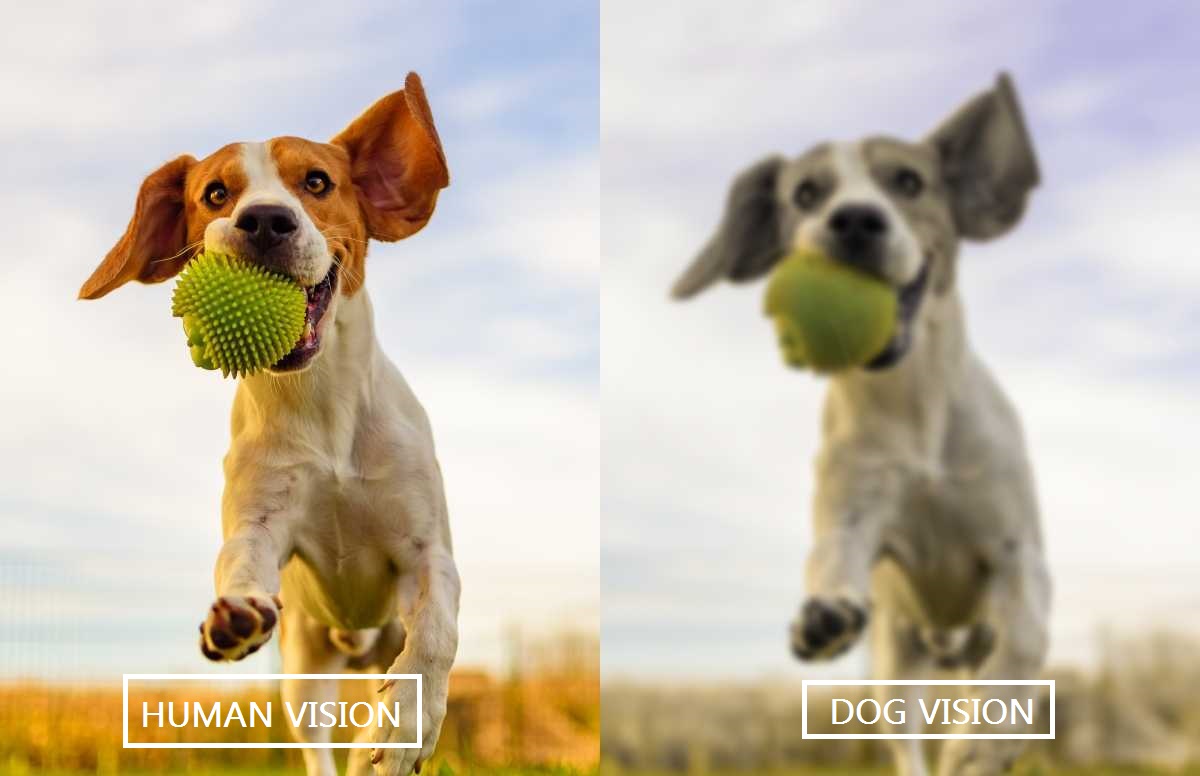
-
Common myth: Dogs see in black and white.
-
Truth: Dogs are dichromatic—they see blue and yellow, but not red and green.
-
Why? They have only two types of cones (blue and yellow).
-
Result: A red ball on green grass looks like a dull brown-on-brown contrast.
Fun fact: Dogs rely more on motion and brightness than color—perfect for tracking prey in low light.
Cats: Night Vision Pros, Color Vision Minimalists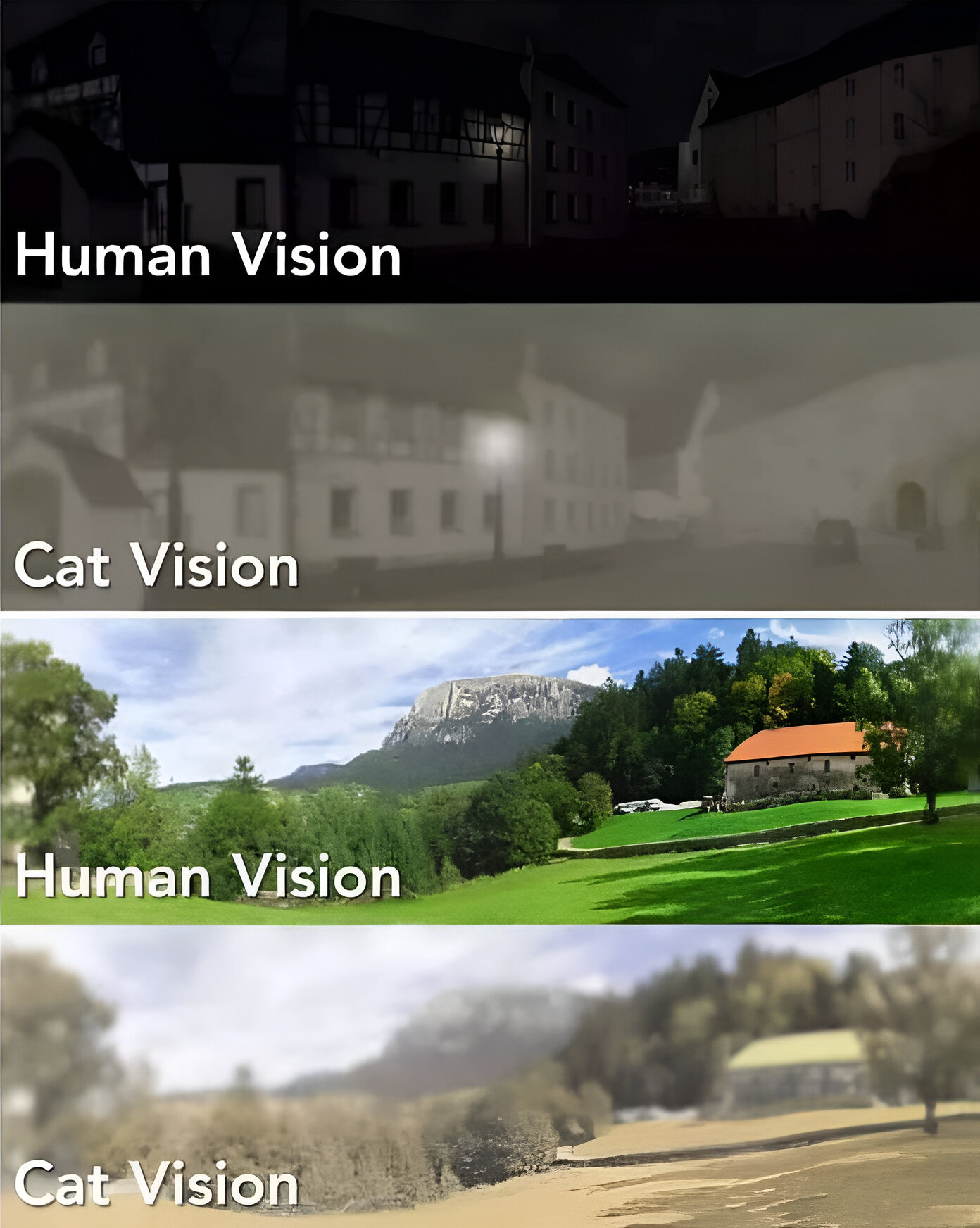
-
Like dogs, cats are also dichromatic, mainly seeing blue and green hues.
-
Reds appear dull or grayish.
-
But they excel in night vision—they can see in near-darkness, thanks to more rod cells and a reflective layer (tapetum lucidum) in their eyes.
Fun fact: Cats’ eyes glow in the dark because of that reflective layer!
Bees: The Ultraviolet World
Bees don’t just see colors—we can’t even see what bees see!
-
Bees are trichromatic, but their vision is shifted toward ultraviolet (UV), blue, and green.
-
They can’t see red, but they see UV patterns on flowers invisible to humans.
-
These UV markings guide them to nectar like runway lights!
Fun fact: Flowers have evolved to display “nectar guides” that only bees can see.
Birds: Masters of Color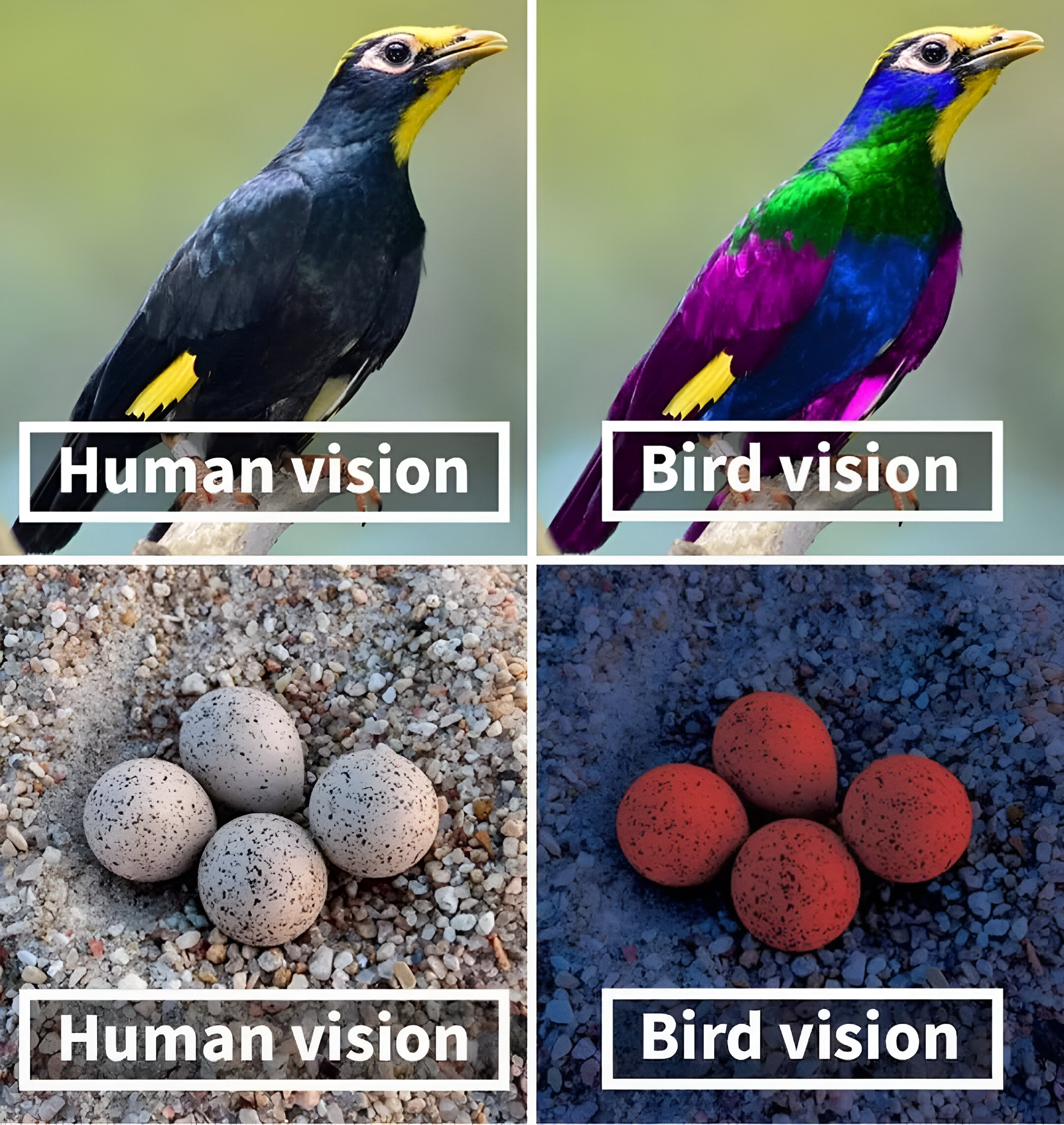
Birds have some of the most advanced color vision in the animal kingdom.
-
Most birds are tetrachromatic—they have four types of cone cells, including one for ultraviolet light.
-
Their world is super-saturated with color, and they see UV-reflective plumage and markings invisible to us.
Fun fact: Many birds use UV signals in courtship displays. What looks dull to us may be dazzling to a potential mate.
Snakes: Seeing with Heat (Infrared)
Some snakes, like pythons and pit vipers, have infrared-sensitive pits.
-
While not color vision in the traditional sense, this gives them a thermal image of warm-blooded prey.
-
They “see” heat, even in total darkness.
Fun fact: It’s like having built-in night-vision goggles!
Mantis Shrimp: The Eye Champions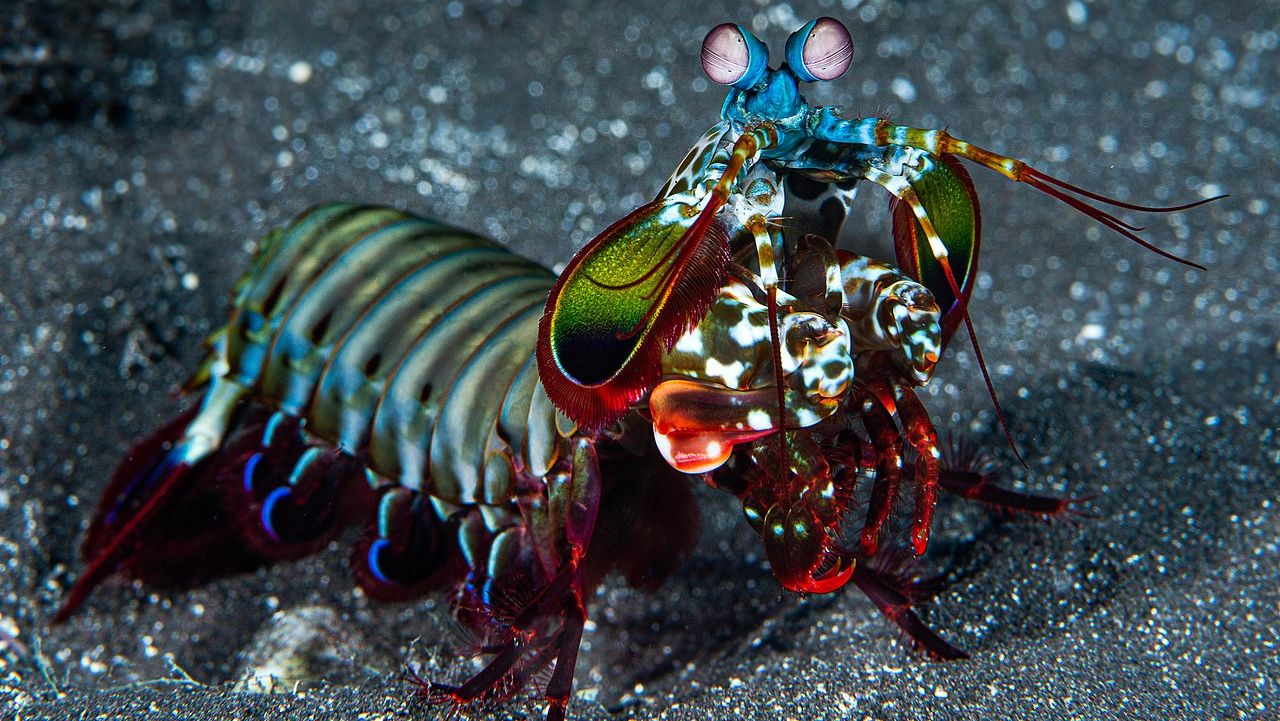
Mantis shrimp are the rockstars of vision.
-
They have up to 16 types of photoreceptors (compared to our 3).
-
They can detect UV, polarized light, and possibly even colors we can’t imagine.
-
But ironically, studies suggest they may not combine those inputs the way we do, so their perception of color may be simpler, despite the complex machinery.
Fun fact: Each eye can move independently and has trinocular vision—depth perception with a single eye!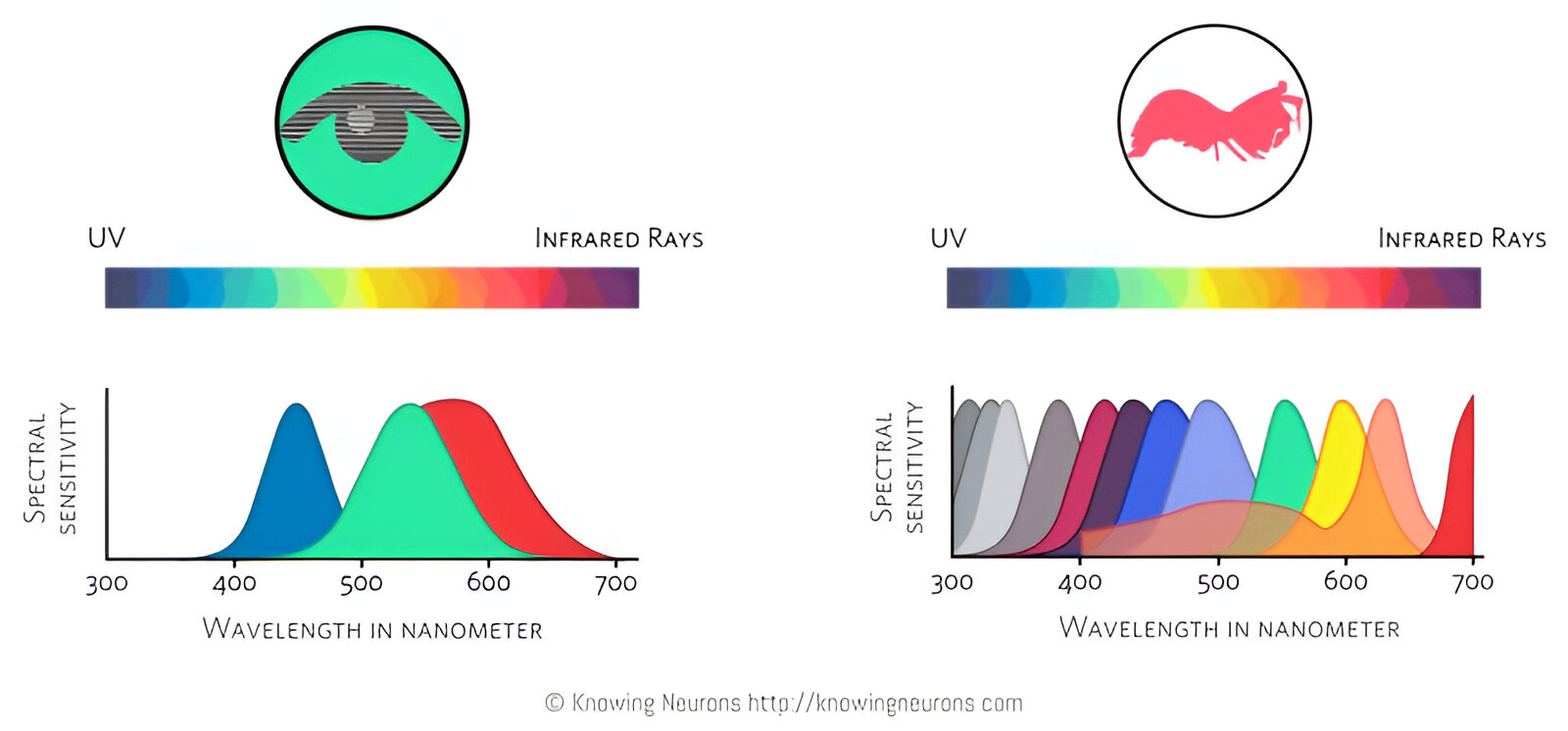
Reptiles and Amphibians: Diverse Vision Abilities
-
Some reptiles (like chameleons and geckos) have tetrachromatic or even pentachromatic vision.
-
Frogs can detect UV light and even perceive colors in low light, where humans see none.
Fun fact: Chameleons don’t change color for camouflage—they do it for temperature regulation and communication, and their color vision helps them signal effectively.
Why It Matters
Understanding how animals see color has practical applications:
-
Veterinary diagnostics (e.g., behavioral signs in vision loss)
-
Wildlife photography and conservation
-
Design of pet toys and training tools
-
Pollination science
-
Robotics and bio-inspired vision tech
And for optometrists and eye care professionals, it highlights the remarkable adaptability of visual systems—offering perspective on both the limitations and potential of human vision.
Conclusion: Many Ways to See the Same World
Color is not just a matter of light—it’s a matter of perception. And every animal sees the world in its own vivid, specialized way.
Next time you look at a flower, remember: a bee sees a UV road map, a bird sees shimmering plumage, and your dog just sees… a yellowish blur.
In the end, vision isn’t just about what’s out there—it’s about how each eye interprets it.

